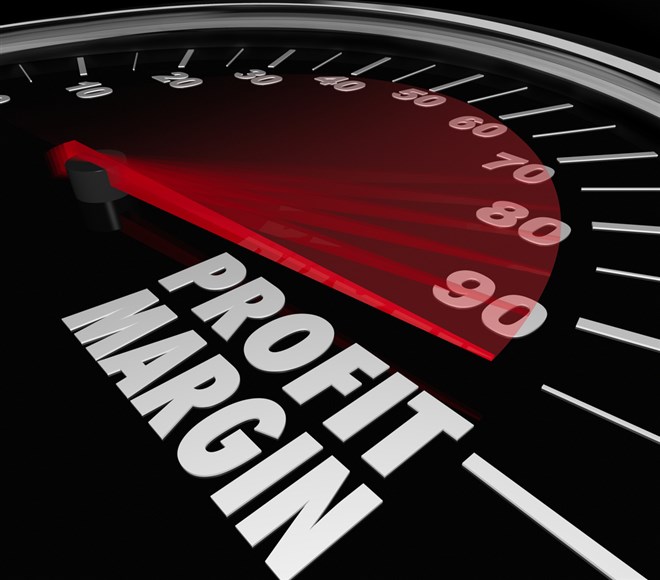Margin Compression. What's it Mean for Your Retail Stocks? By now you've probably heard the term "margin compression" numerous times in the news and headlines. It's an all too familiar term echoed by retailers
By Jea Yu

This story originally appeared on MarketBeat

By now you've probably heard the term "margin compression" numerous times in the news and headlines. It's an all too familiar term echoed by retailers on their earnings reports to explain why their earnings came in lighter than expected. Margin compression is a term used indicating profit margins are being squeezed.
This can result in lower profits and revenues. However, top-line revenues can improve as a result. High inflation, rising interest rates, and economic uncertainty are major headwinds that have caused consumer discretionary spending to contract and consumers to be more mindful for promotions and discounts. These are underlying factors that can lead to margin compression.
What Causes Margin Compression?
Margin compression is when profits get squeezed for a business. It can be caused by rising input costs, competition, and higher promotions and discounts. The latter seems to be the main culprit, and all three contribute to margin compression. Rising costs can hurt margins if the retailer opts to eat the extra costs. If they pass along the costs to the consumer, it can whittle the demand for a retailer's products, especially during economic contractions. The problem gets compounded when a retailer eats the rising costs and still has to discount its merchandise to attract shoppers.
A Race to the Bottom
Retailers copycat each other and can often be in a race to the bottom, with promotions outdoing each other further compressing margins by offering deeper promotions and discounts. If one retailer starts a promotion and discounting campaign, it will likely be one-upped by a competitor. As this happens, consumers shift their behaviors to spend only during promotions and discounts and wave off paying full price. This was one of the reason for Bed, Bath and Beyond (NASDAQ: BBBY) demise with their never expiring "20% off on a single item" coupons which trained shopped to always look for discounts.
Margin Compression Contagion
Literally every major retailer has been affected by margin compression in 2022. Just as retailers enjoyed a meteoric rise in consumer discretionary spending during the post-pandemic reopening in 2021. This is credited to pent-up demand and stimulus checks that led consumers on spending sprees that bolstered margins for retailers. Everything reversed when inflation reached 40-year highs and the U.S. Federal Reserve enacted a monetary tightening policy of aggressive interest rate hikes.
This caused consumers to tighten their wallets as behaviors changed quickly. Consumers expect discounts and promotions for their hard earned cash and retailers have been forced to oblige. This has been echoed by many retailers on their recent earnings reports having to boost their promotions and discounts to attract customers and wind down their overflowing inventory levels. Margin compression can be measured by the year-over-year (YoY) drop in basis points (bps). Here are some examples of margin compression felt by major retailers:
Lululemon Athletica, Inc. (NASDAQ: LULU) updated its fiscal Q4 2022 guidance. It expected a 10 bps to 20 bps improvement, but now sees a (90 bps) to (110 bps) contraction despite raising its revenue guidance higher to $2.66 billion to $2.70 billion, up from $2.605 billion to $2.655 billion. This would be the fourth consecutive quarter of sliding YoY margins. Even Lululemon had to resort to promotions and discounts to move inventory, bolstering revenues while squeezing profits. However, the contraction is mild compared to the rest of the industry.
Under Armor Inc. (NYSE: UAA) had strong top and bottom line beats for its fiscal Q3 2023 as it raised full-year Q2 2023 EPS estimates. The stock initially gapped 8% on the headline numbers, but eventually tanked back down after a deeper look into the numbers. Gross margins fell (650 bps) YoY to 44.2% while inventories grew 50% to $1.2 billion. Under Armor expects margins to continue deteriorating at a rate of (375 bps) to (425 bps) for the rest of the year.
Kohl's Corp. (NYSE: KSS) had a disastrous fiscal Q4 2023 missing EPS estimates by a whopping ($3.46) and lowered full-year 2023 estimates. Business was so bad, they ousted its CEO Michelle Gass in the middle of holiday season replacing her with a former CEO of Burlington Stores, Inc. (NASDAQ: BURL). Gross margins collapsed (1,016 bps) to 23% of net sales. Of that number, 750 bps came from clearance markdowns and 200 bps from cost inflation.
Macy's Inc. (NYSE: M) beat it's Q4 2022 earnings by $0.29 and revenues. They raised full-year 2023 top and bottom line guidance. Upon closer look, the beat came after a dramatic low-ball estimate in Q2 2022. Full-year 2022 earnings came in at $4.47 per shares beating its earlier lowered estimates between $4.00 and $4.20. The real story is the continued drop in margins, falling to 34.1% in Q4 2022 from 36.5% in Q4 2021 and 40.6% in Q2 2021. However, Macy's is one of the best houses in a rough retail neighborhood.











